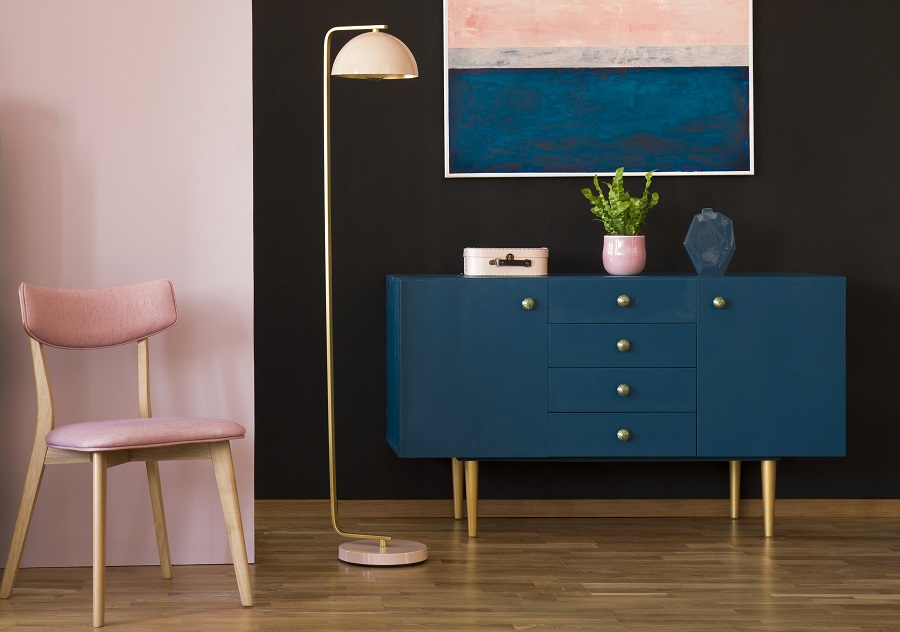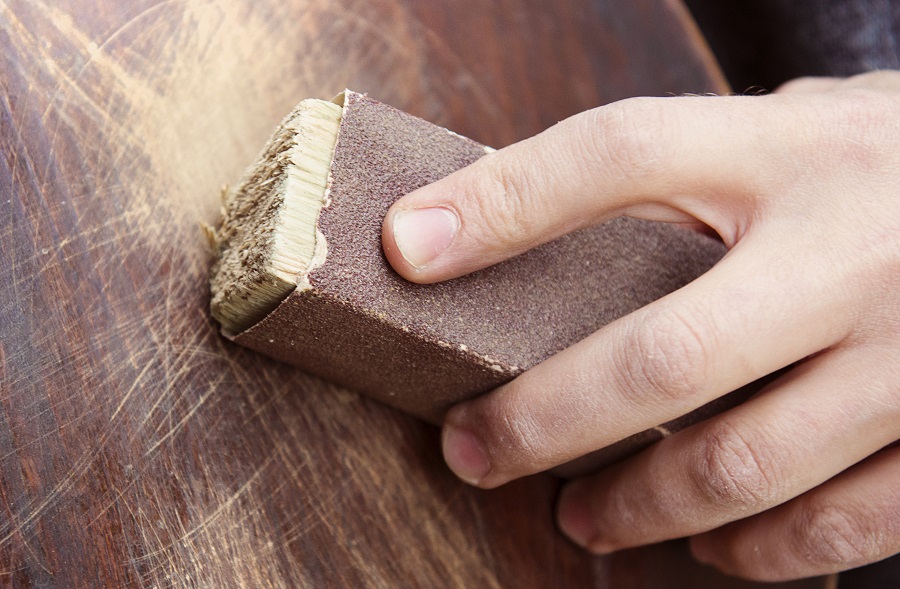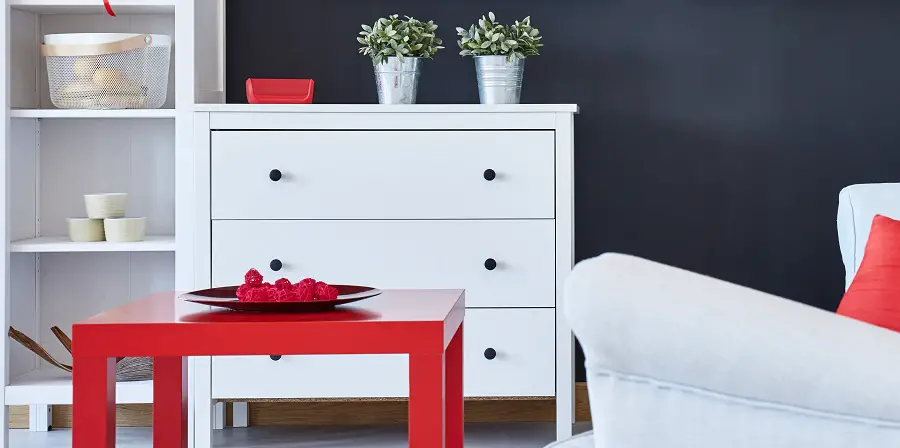The other day a friend of mine who produces furniture with painted MDF fronts called me to ask me how much paint consumption should be per 1 m² of MDF primed. From her voice I realized that something was not right. I knew that the application is done by spraying, with an ordinary cup gun. I replied that it would be around 200 g/m², prepared with hardener and - if necessary - thinner, and even 250-300 g/m² if the model has cutouts, profiles, edges, hollow frames and other machining that increase the losses. But the reality was very far from the figures I had given, and analyzing the reasons why it was reaching such consumptions convinced me to write this article.

What the theory says
In the case of varnishes and paints applied on primed MDF, the consumption is between 110 and 150 g/m², prepared material (hardener, thinner) remaining on the surface. If you spill more than this amount of liquid per 1 m² of non-absorbing flat surface (as is the case with paints and varnishes that are applied to the primed surface) it will be difficult to keep the liquid on the surface because it tends to run off. The same is true of varnishes/paints, and what is consumed in excess of the recommended amount is wastage.
These materials are also used for wood, they are not specific MDF. In general, the consumption of finishing material on a coating, the material remaining on the surface without loss, varies according to the type of material, its viscosity, the absorbency of the substrate and the method of application. In spraying, it can range from 60-70 g/m² in the case of pastes to 200-250 g/m² in thixotropic paints and varnishes. These consumptions are generally found in the manufacturer's recommendations - in product, technology or label sheets.
The Bites They are thinner and absorb into the wood, but do not form a film, so consumption is low. At the other end of the spectrum are thixotropic materials which have the property of being non-flowing due to components that increase surface tension. This property allows a large quantity to be applied to a horizontal or vertical surface without leakage.
Why losses occur
When the application is done by conventional spraying (with a can gun and air pressure from a compressor) the losses can be very high. In theory they range from 20% for flat surfaces up to 60% for frames and frames. But the reality is different and losses can be 3-4 times higher. They occur mainly due to the high air pressure coming from the compressor and entering the gun. You should be working with a pressure of 3-3.5 atm, max 4. Often you also work with 6-7 because high pressure gives the feeling of productivity. It feels like the hand "runs away" when the pressure is high, but it also increases the amount of paint thrown in the air (overspray). And all that is wasted.
Another source of losses can be the nozzle of the spray gun. For conventional spraying of varnishes and paints, 1.8-2 mm nozzles are used. A nozzle that is too small (1.2-1.5) is fine for baths, but to get paint out of such a nozzle you will have to increase the pressure and you end up with losses. In addition, the small droplets will not form a continuous film, and the film gasses easily becoming rough. A nozzle that is too large (2.5-3 mm, as used for thixotropic products) can apply too much and spills occur. Being the top coat we certainly don't want this.
The final coat of varnish or paint is applied on top of the dry and sanded primer coat. If the primer does not cover the surface well enough to prevent the paint from being absorbed into the wood or MDF, the consumption increases, which also means losses.
Losses also depend very much on the pattern, the design of the piece. If the furniture has a lot of edges, corners, edges, frames, milled patterns, cut-outs, the consumption will increase and so will the losses. This is actually where the biggest losses are. For such designs, spray guns that can direct the jet are best suited.
How losses can be reduced
Although it may seem that reducing waste is all about spraying and gun quality, it starts much earlier. Let's take them one at a time.
Choosing MDF and sanding milled areas . The MDF you use should be of good quality, not stained or have small holes on the surface. If you have been working with MDF for a long time, a lower price, different from what you usually pay and the usual market price, should give you pause for thought. I have seen MDF so poor in quality that it almost completely absorbed the second coat of primer.
The milled areas should be well sanded. Use 150 or 180 grit sandpaper, as in wood in white. The raised fiber must be sliced and the surface smoothed. If the substrate preparation is not done properly a large amount of primer will be absorbed (again losses) and the fiber will rise. For the milled areas of MDF we recommend insulation, a material that seals the surface much better and prevents absorption.
Don't skimp on primer. Don't think about starting the economy with primer. Apply a minimum of two coats (coats, not passes). It's the primer that will give you the finished look. Plus paint is more expensive than primer. A thin coat of primer will result in more paint consumption to achieve the desired quality. You know the expression saving on bran and a big hand on corn? The same goes for the thin coat of primer.
Sand the primer coat properly, choose the right grit for the sandpaper. If you have applied 2 coats of primer which you remove when sanding, you have not solved anything. Sanding should be done with 280 or 320 grit sandpaper if the paint you are applying will be matte or semi-matte and 400 or higher if you will be applying gloss paint. If the paper is lower grit (it's coarser) you will take too much primer and it will be bad twice: once you throw away the primer and the second you will get a poor quality surface.

If you get to see the MDF after sanding the primer, something is wrong. Either you have used too little primer or the abrasive map is wrong. When you apply the paint, the piece should be nicely sanded and smooth. If it is well coated with primer and sanded so that it is smooth and the MDF is not showing through, you will use a small amount of paint, just enough to ensure color and gloss.
Use quality spray guns. Don't cut corners when you buy spray gunif you want to achieve beautiful, drip-free, non-greasy surfaces. Maintain the gun by washing it thoroughly after use or at the end of each working day. Work with the right nozzle and the right pressure, even if you don't seem to be working fast enough. And if you're thinking of making an investment, buy a spray pump. You'll be amazed at how much difference it makes, how well the products are applied and how much over-spray is reduced.
Determining actual consumption. Calculation of areas
When determining consumption you must consider all the surfaces that are being covered. If you calculate only the flat surfaces and ignore the edges, milling and cut-outs that increase the actual surface area, you will end up with very high losses. But they are not real because all those narrow surfaces exist and have to be covered. Adding them to the total surface area can reduce losses significantly.
The easiest way to determine a real consumption is to prepare a quantity of material at the beginning of the day and then paint at least one whole piece with all its components. The more and more varied the pieces you paint, the more complete a picture you will get of the actual consumption. After 4-6 hours, or even at the end of the day, weigh the amount of paint left, subtract from the total amount mixed and see the actual consumption, including losses. Then calculate the area correctly, including corners, edges and all narrow surfaces, divide the total consumption by the total area painted and get the actual consumption per m². If the actual paint consumption is more than double the amount in the data sheet, you have a problem.
I hope you find the above recommendations helpful. If you have any questions or need further information, please write below in the space provided. I promise to reply to each of you.





































Add comment